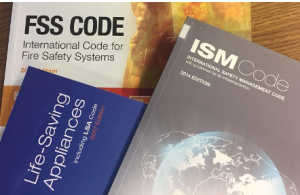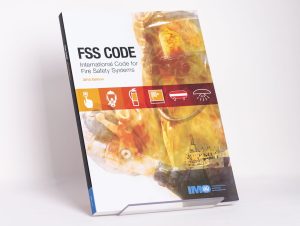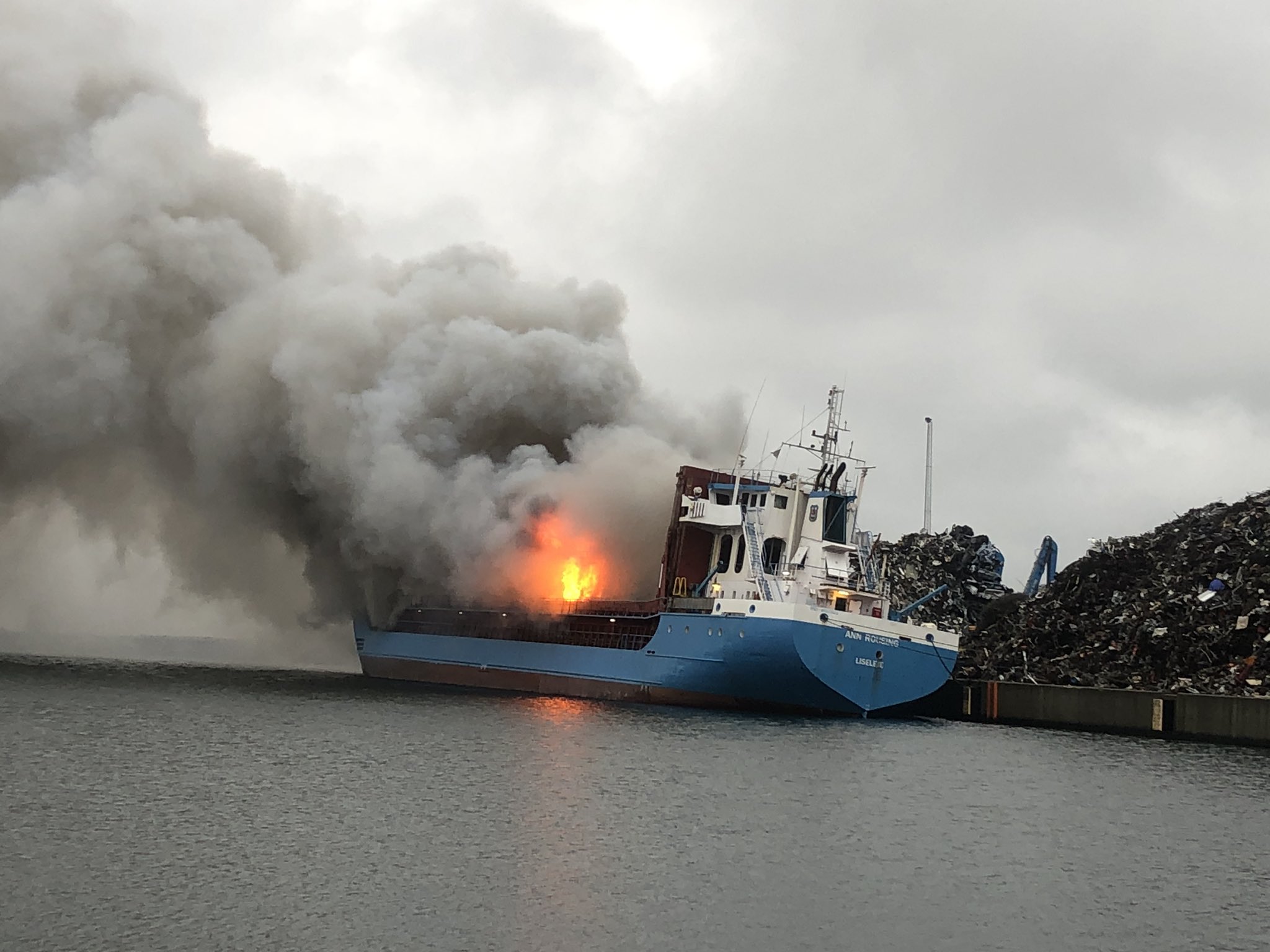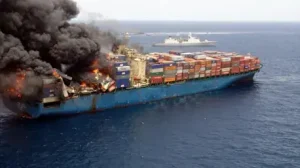
In the realm of maritime safety, few codes are as critical as the FSS Code. The International Code for Fire Safety Systems (FSS Code) is a cornerstone in ensuring the safety of lives at sea by establishing stringent standards for fire prevention, detection, and suppression on ships. This comprehensive article explores the core aspects of the FSS Code for ships, offering insights for maritime students, cadets, professionals, and enthusiasts.
What is the FSS Code?
The FSS Code is a set of international requirements created by the International Maritime Organization (IMO) under the SOLAS (Safety of Life at Sea) Convention. The code sets technical specifications for fire safety systems aboard vessels, covering everything from fire detection to fixed extinguishing installations.
Its primary aim is to reduce fire risks, enhance emergency preparedness, and ensure consistent global application of safety standards aboard commercial and passenger ships.
🔥 The 15 Chapters of the FSS Code: A Breakdown of Fire Safety Systems on Ships
The International Code for Fire Safety Systems (FSS Code) is structured into 15 chapters, each addressing a critical component of onboard fire prevention, detection, and response. These chapters ensure uniformity, compliance, and effectiveness of shipboard fire safety systems. Here’s a brief overview of each:
1. General Requirements
Outlines the foundational principles and universal requirements that apply to all fire safety systems. This chapter covers definitions, standards, installation, and maintenance protocols.
2. Fire Extinguishers
Specifies the types, quantities, placement, and inspection of portable fire extinguishers, suited for different classes of fires onboard.
3. Personal Protection
Covers equipment for individual crew safety, such as firefighter’s outfits, heat-resistant clothing, and protective gloves used during fire emergencies.
4. Fire Extinguishing Appliances
Details the standards for larger extinguishing systems such as foam, dry powder, and water spray systems for use in machinery spaces and cargo areas.
5. Fixed Gas Fire-Extinguishing Systems
Describes the installation and performance standards for CO₂, halocarbon, and inert gas systems used to suppress fires in engine rooms and cargo holds.
6. Fixed Foam Fire-Extinguishing Systems
Regulates systems that apply foam to suppress flammable liquid fires in areas like cargo pump rooms, deck foam monitors, or machinery spaces.
7. Fixed Pressure Water-Spraying and Water Mist Systems
Focuses on high-pressure mist or spray systems that cool surfaces, suppress flames, and limit fire spread in enclosed spaces.
8. Automatic Sprinkler, Fire Detection, and Fire Alarm Systems
Governs systems that detect heat or smoke and automatically activate sprinklers and alarms, typically used in accommodation and service areas.
9. Fixed Fire Detection and Fire Alarm Systems
Outlines standards for manual or automatic fire detection and alarm systems installed throughout the vessel, ensuring early warning.
10. Sample Extraction Smoke Detection Systems
Specifies smoke detection systems that extract air samples from cargo holds or machinery spaces for analysis and early fire identification.
11. Low-Location Lighting Systems
Regulates lighting systems installed close to deck level to guide passengers and crew to exits in smoke-filled corridors or stairways.
12. Emergency Escape Breathing Devices (EEBDs)
Describes the use and placement of EEBDs to aid crew in escaping from smoke-filled or toxic environments in emergencies.
13. Arrangement of Means of Escape
Covers the layout, signage, and structural design to ensure safe and efficient evacuation routes from accommodation and working spaces.
14. Fixed Emergency Fire Pumps
Defines the capacity, arrangement, and operation of dedicated fire pumps that must function independently in case of power failure.
15. Inert Gas Systems
Provides standards for inert gas systems (IGS), primarily on tankers, used to prevent flammable atmospheres in cargo tanks.

Purpose and Objectives
The FSS Code was designed to:
- Protect life by reducing fire-related incidents.
- Standardize fire safety equipment and systems.
- Facilitate inspection and certification procedures.
- Improve crew readiness during fire emergencies.
These objectives align with SOLAS Chapter II-2, which focuses on fire protection, detection, and extinction.
SOLAS and the FSS Code: The Connection
The SOLAS Convention is the overarching treaty for maritime safety. The FSS Code, adopted by the Maritime Safety Committee (MSC), is referenced in SOLAS Chapter II-2. It ensures all SOLAS-compliant vessels are equipped with standard fire protection measures, making it a binding instrument for most commercial ships worldwide.
FSS Code Requirements for Fire Detection and Alarms
One of the most crucial chapters in the FSS Code outlines the general requirements for fire detection and alarm systems. These include:
- Automatic detection in accommodation, service spaces, and control stations.
- Visual and audible alarms located throughout the vessel.
- Redundant power supplies for uninterrupted operation.
- Test and inspection protocols to ensure equipment functionality.
What is the FSS Code EEBD?
The Emergency Escape Breathing Device (EEBD) is mandated under the FSS Code to assist personnel in escaping from smoke-filled spaces. Key requirements include:
- Located in accommodation areas and engine rooms.
- Minimum duration: 10 minutes.
- Clearly marked and easily accessible.
- Training in EEBD use is mandatory for crew.
Recent Editions and Amendments
The FSS Code has undergone several amendments since its adoption. Recent updates have clarified performance standards, especially for:
- Water mist systems
- Fixed gas suppression systems
- Updated EEBD specifications
For access to the most recent edition, users may refer to IMO’s official site or authorized maritime publishers.
How to Access the Latest FSS Code PDF
Many maritime students and officers search for “FSS Code for ships PDF free download.” While unofficial versions might circulate online, it is strongly advised to obtain the latest edition legally through:
- IMO Publications
- Maritime training centers
- Approved university libraries and digital portals
FAQs Recap:
- What is FSS in a ship? An international fire safety code ensuring standardized fire prevention and response systems.
- What is the FSS Code EEBD? A safety device for emergency escape during fire.
- What are SOLAS and FSS general requirements? Fire detection, alarms, extinguishing systems, breathing devices, and drills.
- Where to find the FSS Code latest edition PDF? Via the IMO official website or approved publishers.
Challenges in Implementing the FSS Code
Implementing the FSS Code on ships faces several challenges, including a lack of crew awareness about fire safety protocols, poor maintenance of firefighting equipment, and non-compliance with IMO regulations due to cost constraints or oversight issues. To address these gaps, regular inspections, audits, and comprehensive crew training sessions are essential to enhance compliance and ensure effective fire safety on board. Despite its importance, some common challenges in implementing the FSS Code on ships include:
- Lack of Crew Awareness – Many crew members are unfamiliar with fire safety protocols.
- Poor Maintenance of Firefighting Equipment – Inadequate maintenance can lead to system failure during emergencies.
- Non-Compliance with IMO Regulations – Some ships fail to meet FSS Code requirements due to cost constraints or lack of oversight.
Regular inspections, audits, and crew training sessions can bridge compliance gaps and improve overall fire safety on board.
–
Best Practices for Effective FSS Code Compliance
To ensure full compliance with the FSS Code, ship operators should follow these best practices:
1. Conduct Regular Fire Drills
- Schedule monthly fire drills as required by SOLAS.
- Simulate realistic fire scenarios to improve crew response times.
- Assess crew performance and identify areas for improvement.
2. Implement a Preventive Maintenance Program
- Inspect fire detection systems and extinguishers every six months.
- Ensure automatic fire suppression systems are in optimal condition.
- Replace faulty equipment before failures occur.
3. Provide Comprehensive Crew Training
- Educate crew members on fire detection, suppression, and evacuation procedures.
- Conduct hands-on training with firefighting equipment.
- Ensure all personnel understand fire safety protocols before departure.
4. Stay Updated with IMO Regulations
- Monitor IMO updates on the FSS Code and SOLAS amendments.
- Participate in maritime safety seminars and training programs.
- Work with classification societies for periodic vessel inspections.
Conclusion
The FSS Code for ships plays a pivotal role in safeguarding lives and property at sea. By setting rigorous standards for fire safety systems, the code ensures uniformity across the global maritime industry. Whether you are a student, cadet, officer, or ship operator, understanding and applying the principles of the FSS Code is vital to fostering a safe shipboard environment.
For additional training material and visual aids on the FSS Code and other SOLAS-related topics, visit maritimeeducation.com.


